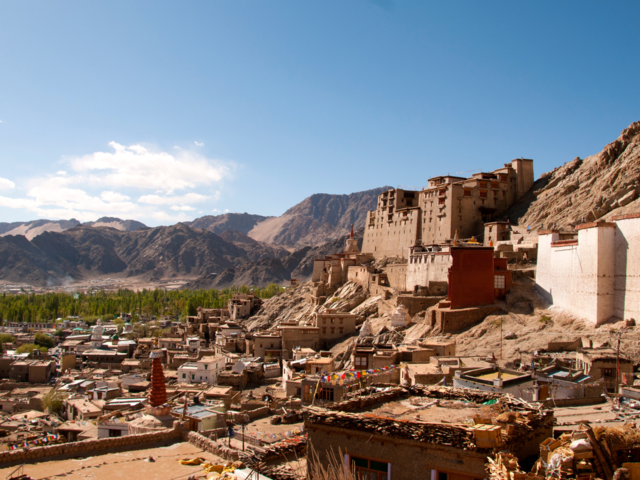
Left to right: Rahul Mathew & Ari Weiss
Weiss was in India as a part of DDB’s first global creative council meet held in Mumbai last month.
Jan 20, 2020, 19:09 IST
ad-agencies
India is a market of fascinating creativity and an immense growth potential: Ari Weiss, Chief Creative Officer, DDB Worldwide
Jan 20, 2020, 19:09 IST
Weiss was in India as a part of DDB’s first global creative council meet held in Mumbai last month.
- Ari Weiss, Chief Creative Officer,
DDB Worldwide and Rahul Mathew, National Creative Director,DDB Mudra Group spoke to us recently about the changing face of advertising. - Weiss and Mathew told us what it takes to create an impact in an ever-changing ecosystem.
- Weiss also tells us about his enthusiasm about the Indian market, which he believes will soon be counted among the top markets for the agency.
The world of advertising is right now in a phase of disruption. Technology is changing how things work. Data is making it possible for advertisers to target consumers directly, and more effectively. The rise of digital, while making it easier to reach out to consumers, is also making it difficult for advertisers to break the clutter. In such a scenario, what are the essentials that a new-age advertiser needs to take care of, to make sure they not only solve their client’s problems, but that they are also able to make a difference to the lives of consumers too? How does a creative break the clutter in a world that has suddenly become so much noisier than it was a decade ago? What elevates a good idea and takes it to the next level, making it a brilliant idea? And how are agencies coping with the ever-evolving world of advertising?
These are a few, among the many questions I threw at Ari Weiss, Chief Creative Officer, DDB Worldwide and Rahul Mathew, National Creative Director, DDB Mudra Group. Weiss was in India as a part of DDB’s first global creative council meet held in Mumbai last month. Weiss, who was elevated to the role in July last year, and the trip to India, and other markets the agency is present in, was aimed at helping him deep-dive into these markets.
That he considers India to be a critical market is clear from Weiss’ palpable enthusiasm about the work coming out of the country. He is also confident that India will soon figure among the top markets for the network.
Looking back at the last decade
The last decade saw the advertising industry go through massive disruption. With the growth of internet, and the increasing use of data in tech in determining consumer behavior and working around that to deliver creatives, the way the ad world works, saw a huge change.
Speaking about some of the biggest changes he witnessed, that has brought us where we are today, Weiss said, “We've seen the media landscape shift quite a bit in the last decade. The digital transformation which was already underway at the start of the decade, matured as a market and made it clear that it was here to stay. We saw a lot of experimentation in the early days. We have seen an evolution where from the earlier gimmicks of the platform experimentation, we have now come to longer, effective storytelling and brand building across these platforms. Today we’re seeing more of sustainable brand-building. It's an interesting time for both the creative industry and brands because you have to find simple and striking human truths that can live anywhere and can be built into one big story.”
When the entire ecosystem is changing, it’s obvious that the way brands tell their stories will also change. Pointing towards one interesting change, Mathew said, “There is definitely a trend towards brands becoming more conscientious, and that's going to go into the next decade. Brands are now seeing themselves as citizens who live in the environment that everyone else is a part of, and they have to play their role as conscientious citizens of the world that we live and operate in, instead of simply having a capitalistic approach.”
The evolution of creativity
In today’s world, the way you tell a story is very different from what it was even till a decade back. So from a creative’s lens, how different are things today? What does one need to do to be a good story-teller, while being relevant?
“The beauty of creativity is that ultimately it never changes from the fundamental perspective. We have to come up with really interesting ways of telling stories,” explained Weiss. “How we tell the stories, however, has obviously changed. In this fragmented landscape where narratives can take place over hundreds of different platforms, it forces us to come up with a creative idea that is incredibly simple, and has to be incredibly intoxicating at first glance. We talk about the simplicity of a great creative idea. Before, when ideas were living on fewer platforms, you could have some complexity to the idea because it did not have to travel so fluidly. That was a great moment in time as well. But this evolution is a new place to play and these huge ideas living across something of a 3D landscape than a linear landscape, is a wonderful place for creativity and story-telling,” he added.
Weiss has also been very vocal about his thoughts on data and technology coming into play in the industry. He has always believed that the data handing creatives with human insights is only as good as the person interpreting it. “I think a mistake we often make is that we let data lead us. But today, there can be so many different ways of interpreting data. Ours is an incredibly human business. And as much technology as we get, it will still need to be processed by incredibly intelligent humans because that's how you pivot between the data and a great insight, and a great creative articulation of that insight,” he explained.
And how do you turn an average or a great idea into a brilliant idea? “From day one, we're taught that we're uninvited guests in this world and it requires a lot of creativity to turn that uninvited guest into an invited one. A great idea surprises you, it can be where it lives, what it says and how it can be brought to life.”
Pointing to the fact that clients play an equally important role in immortalizing a piece of creative work, Mathew says, “What makes an idea great also depends on the number of people believing in that idea, and the clients rallying behind you. I don’t think we have come up with a great work where our client wasn’t equally great. It’s not tough to come up with a great idea but it’s really tough to protect it which is where great clients come in.”
Looking at India’s growth story
Despite the overall industry slowdown, DDB Mudra had a good year. With a slew of new clients coming on board, 2019 also became the most-awarded year for the agency as the agency put up a good show at global as well as domestic award shows. The Stayfree Project Free Period and ‘Hastagsdontheal’ for Khalsa Aid won the agency a lot of accolades. Moreover, it launched the first ever NBA game in India through the campaign #NBAInMyBackyard which focused on the social currency of the game in India and created a sporting spectacle while building a community and coding in culture.
Weiss said that the Stayfree campaign particularly impressed him because of it ticked all the right boxes. It was an idea that could be relevant anywhere. “It wasn’t social purpose for social purpose’s sake. It was an incredibly well-told story that landed a brand truth in a very emotional and impactful way,” he said about what he thought worked in the campaign’s favor.
Speaking about the energy that the young team in India brings to the table, he added, “When I first met Aditya and Rahul, I felt this youthful, disruptive energy in this team. When you look at the clients who are being attracted to them at the moment, and you look at this disruptor energy from a very young, ambitious and talented team, you just get very excited. You pair the culture, the market and the talent sitting behind it and think that you have to embrace and support it however you can because there's so much potential here.”
Sharing his enthusiasm about India as a market, Weiss also said that the sheer size of the market presents a huge opportunity. “This is a market of immense creativity and it's absolutely not lost on me that this is a region of immense growth,” he said. On being asked when he thinks India can be counted among the top markets for the agency globally, he added with a smile, “Today! India is a culture rich in art and you realize that from the moment you land in the country. There are other markets that have the growth potential but not the creative culture that is true to the core DNA of this market. To find that combination of the DNA and the growth, I think India is already there today. We simply have to feed it.”
INSIDER INTELLIGENCE REPORTS







